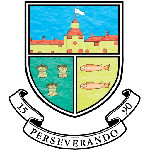Mathematics
| Mr S Robinson (Head of Team) | srobinson@conyers.org.uk | Mr J Downs | jdowns@conyers.org.uk |
| Mr K Anderson | kanderson@conyers.org.uk | Mrs K Gray | kgray@conyers.org.uk |
| Miss L Allanson | lallanson@conyers.org.uk | Mr M Black | mblack@conyers.org.uk |
| Mr P Dixon | pdixon@conyers.org.uk | Mr A Pach | apach@conyers.org.uk |
| Mr M Taylor | mtaylor@conyers.org.uk | Mx A Taylor | ataylor@conyers.org.uk |
| Mrs J White | jwhite@conyers.org.uk |
Key Stage 4 Curriculum Map
Curriculum Intent
Students should leave KS3 knowing the fundamental rules that govern mathematics and that these are to be used in various ways to help solve more complex problems. The intention at KS4 is to harness these skills and knowledge to develop our students into independent, critical thinkers who are adaptable to new and unfamiliar situations thus allowing them to realise their potential.
Key Knowledge and Skills
Foundation
Calculate with roots and integer indices
Manipulate algebraic expressions by expanding the product of two binomials
Manipulate algebraic expressions by factorising a quadratic expression
Understand and use the gradient of a straight line to solve problems
Solve two linear simultaneous equations algebraically and graphically
Plot and interpret graphs of quadratic functions
Change freely between compound units
Use ruler and compass methods for constructions and loci
Calculate exactly with multiples of π
Apply Pythagoras’ theorem and trigonometry in two dimensions
Use geometrical reasoning to construct simple proofs
Use tree diagrams to list outcomes
Solve problems involving direct and inverse proportion
Understand and use vectors
Analyse data through measures of central tendency
Higher
Manipulate fractional indices
Solve problems involving similar shapes
Calculate volumes of spheres, cones and pyramids
Simplify surds, including rationalising the denominator of a surd expression
Manipulate expressions and solve quadratic equations and inequalities
Deduce roots and turning points of quadratic functions
Sketch translations and reflections of given functions
Use the sine and cosine rules to solve problems
Convert between recurring decimals and fractions
Solve equations using iterative methods
Link graphs of quadratic functions to related equations
Interpret a gradient as a rate of change
Recognise and use the equation of a circle with centre at the origin
Sequence Discussion
Year 10 begins with 3 short topics which thorough understanding of will allow for ‘easy marks’ to be picked up in exams either through questions directly about them or as follow through marks (rounding, estimation, fraction, decimal and percentage conversation (and some arithmetic) and metric unit conversions. We then introduce right angled trigonometry as the first new GCSE topic. KS3 objectives form the pre-requisite knowledge of all KS4 topics, however, students studying the foundation level have opportunities to revisit and relearn previously seen content. Higher tier students have this opportunity on some occasions in Year 11.
The Year 11 scheme is written in such a way to allow for some flexibility in teaching order as not all higher tiered students will be taught everything in the specification. Our assessment programme which begins at the end of Year 10 and rolls throughout Year 11 provide regular anchor points for teachers to assess understanding of topics and adapt their planning accordingly. Teachers of our lower attaining students have flexibility in their application of the SoW to allow teaching towards alternative Level 1 and 2 qualifications such as the Edexcel Awards or Functional Skills.
As is the case in KS3 we use ‘skills based starters and homework’ to ensure regular practise of fundamental skills and techniques is taking place throughout Year 10 and 11. A set of 10 skills is chosen each half term and these are tested by questions which are repeated weekly but with minor tweaks. The idea is to focus on cementing the building blocks of a mathematician whilst leaving more time in lessons to focus on the application of skills and knowledge in more complex problem solving situations which are more aligned with how students are tested at GCSE level. Students keep a record of their progress electronically and the teacher assesses this at the end of each half term.
Year 10
Half Term 1
Numbers and the number system
Measuring space
Investigating properties of shapes
Checking, approximating and estimating
Calculating fractions, decimals and percentages
Half Term 2
Algebraic proficiency: tinkering
Calculating
Algebraic proficiency: visualising
Mathematical movement
Half Term 3
Solving equations and inequalities
Analysing statistics
Proportional reasoning
Half Term 4
Calculating space
Pattern searching
Understanding risk
Half Term 5
Solving equations and inequalities Calculating space
Exploring fractions, decimals and percentages
Half Term 6
Investigating angles and conjecturing
Solving equations and inequalities
Algebraic proficiency: visualising 2
Year 11
Half Term 1
Solving equations and inequalities 1 & 2
Investigating properties of shapes
Calculating
Half Term 2
Algebraic proficiency: visualising 1 & 2
Solving equations and inequalities 3
Mathematical movement 1
Half Term 3
Pattern searching
Algebraic proficiency: tinkering
Algebraic proficiency: visualising
Half Term 4
Analysing statistics
Algebraic proficiency: visualising
Mathematical movement
Visualising and constructing

